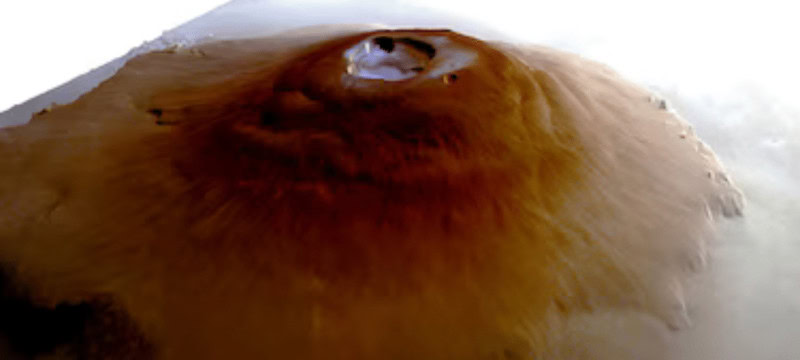A recent study has uncovered an intriguing discovery about the equatorial region of Mars, where the solar system’s tallest volcanoes reside. These colossal structures, some towering as high as three Mount Everests, are shrouded in a surprising phenomenon: frost. Led by Adomas Valantinas, the research indicates that the expansive calderas atop these volcanoes create a unique microclimate, leading to the formation of morning frost, a revelation observed for the first time using cameras aboard Mars-orbiting probes.
The study, published in Nature Geoscience, highlights findings from four major Martian volcanoes: Olympus Mons, Arsia Mons, Ascraeus Mons, and Ceraunius Tholus. Despite the frost being incredibly thin — comparable to one-sixth the width of a human hair — its widespread presence suggests a significant amount of water ice, estimated at around 150,000 metric tons, akin to 60 Olympic swimming pools. This discovery was made possible through meticulous examination of over 5,000 images captured by the University of Bern’s CaSSIS camera, aboard the ExoMars Trace Gas Orbiter.
Valantinas describes the discovery as serendipitous, as the initial search targeted carbon dioxide frost, but stumbled upon water frost instead. Despite its potential significance, harvesting this frost for human exploration seems impractical due to its ephemeral nature and thinness.
The presence of water frost in Mars’ equatorial region challenges conventional understanding, particularly considering its designation as a dry desert planet. The study suggests that in Mars’ distant past, when its atmosphere was denser and climate different, glaciers might have adorned these volcanic giants. The team aims to broaden their investigation to encompass all major Martian volcanoes.
Experts not involved in the study, like John Bridges from the University of Leicester and J. Taylor Perron from MIT, commend the research’s innovative use of technology and its contribution to understanding Mars’ water cycle. Perron notes the surprising nature of water frost in the equatorial region and raises questions about its origin and the dynamics of water vapor movement on the Martian surface.









